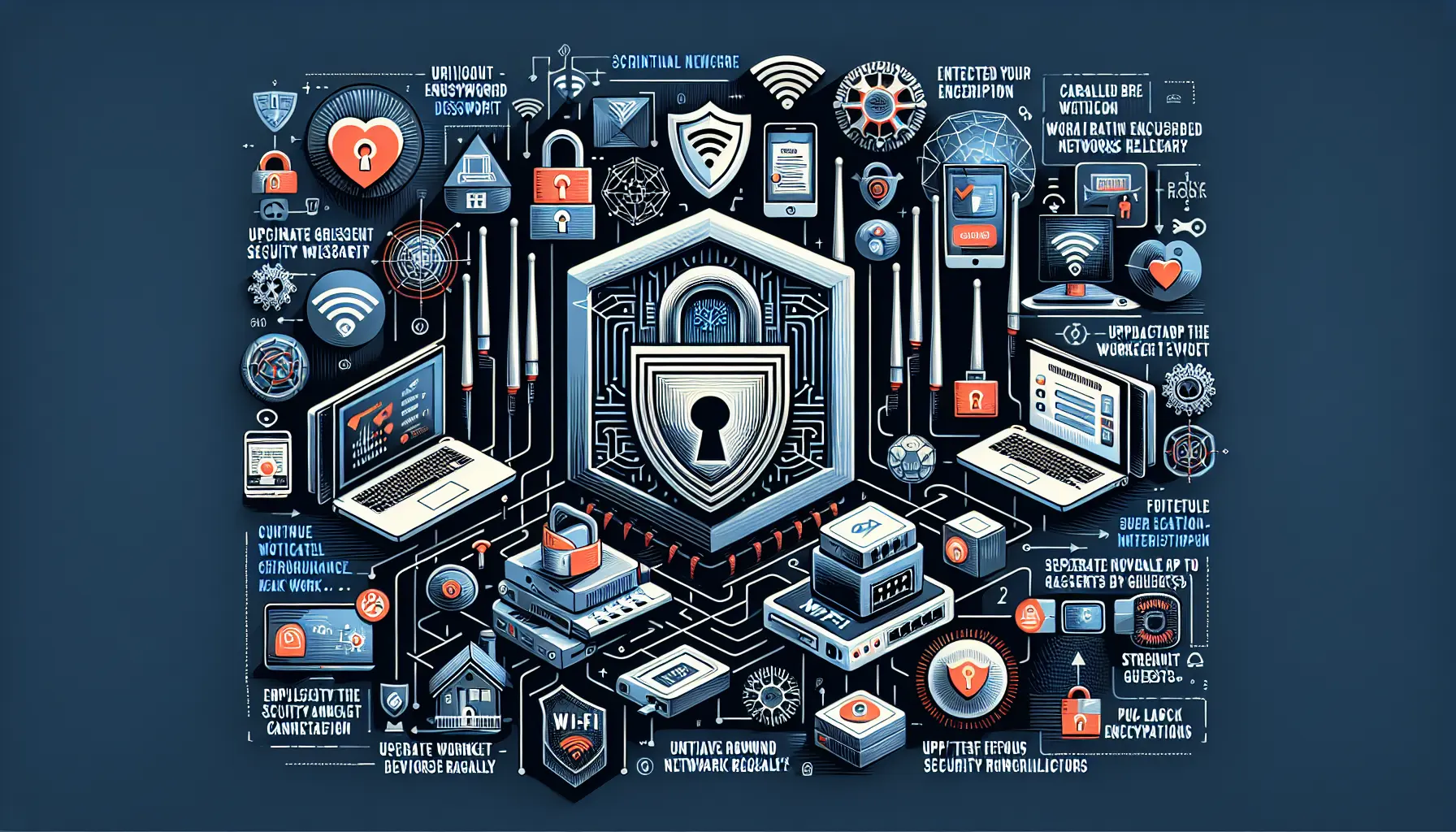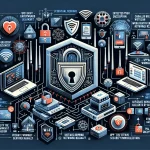
Estimated reading time: 8 minutes
Key Takeaways
- Wi-Fi security is essential: An unsecured network can lead to data theft, unauthorized access, and malware infections.
- Create strong passwords and use modern encryption: Use complex passwords and the latest encryption standards like WPA3.
- Regularly update your router firmware: Keep your router's firmware up to date to patch security vulnerabilities.
- Set up a guest network: Isolate guest devices from your main network for added security.
- Implement access controls and monitor devices: Use MAC filtering and regularly check connected devices.
- Protect smart devices: Secure IoT devices by changing default passwords and updating firmware.
- Avoid common security mistakes: Don't use default passwords or enable risky features like WPS.
Table of Contents
- Introduction
- Understanding the Stakes: Why Wi-Fi Security Matters
- Essential Steps to Secure Your Home Wi-Fi
- 1. Create a Strong Network Password
- 2. Enable Modern Encryption
- 3. Update Router Firmware
- 4. Set Up a Separate Guest Network
- 5. Implement Access Controls
- Advanced Security Measures
- Ongoing Maintenance for Network Security
- Common Security Mistakes to Avoid
- Final Security Checklist
- Conclusion
- Frequently Asked Questions
How to Secure Your Home Wi-Fi: Simple Steps for Maximum Security
A secure home Wi-Fi network forms the foundation of your digital safety. With cybercrime rising and more devices connecting to our networks daily, protecting your wireless connection has never been more critical. This guide walks you through practical steps to fortify your home Wi-Fi security, keeping your personal data and devices safe from unauthorized access.
Understanding the Stakes: Why Wi-Fi Security Matters
Your home Wi-Fi network acts as the gateway to your digital life. An unsecured network leaves you vulnerable to various threats, including:
- Data theft and identity compromise
- Unauthorized network access
- Bandwidth stealing that slows your connection
- Potential malware infections across connected devices
Recent data shows that home networks face hundreds of attempted breaches monthly, making security essential for every household. [Source]
Essential Steps to Secure Your Home Wi-Fi
1. Create a Strong Network Password
Your first defense against intruders starts with a robust Wi-Fi password. Follow these guidelines:
- Use at least 12 characters
- Combine uppercase letters, lowercase letters, numbers, and symbols
- Avoid common words or personal information
To change your password:
- Access your router's admin panel through your web browser
- Look for wireless security settings
- Update both the admin and network passwords
2. Enable Modern Encryption
Proper encryption prevents others from reading your network traffic. Always use:
- WPA3 encryption if your router supports it
- WPA2-PSK (AES) as a minimum standard
- Never use older WEP encryption—it's easily broken
3. Update Router Firmware
Regular firmware updates patch security vulnerabilities. Set a monthly reminder to:
- Check for available updates in your router's admin panel
- Install updates promptly when available
- Enable automatic updates if your router offers this feature
[Learn more about cybersecurity tools]
4. Set Up a Separate Guest Network
Keep visitors' devices isolated from your main network:
- Create a dedicated guest network with different login credentials
- Enable guest network isolation in router settings
- Use a separate password from your main network
[Secure Remote Work Setup Guide]
5. Implement Access Controls
Monitor and control device connections:
- Enable MAC address filtering
- Regularly review connected devices
- Remove unknown devices immediately
[Cybersecurity Threats 2025 Strategies]
Advanced Security Measures
Network Monitoring and Protection
Add extra layers of security:
- Install a network-level VPN
- Enable built-in firewall features
- Use network monitoring tools to track unusual activity
[Best Cybersecurity Tools Guide]
Smart Device Security
Protect IoT devices:
- Change default passwords on all smart devices
- Keep device firmware updated
- Disable unnecessary features and remote access
Ongoing Maintenance for Network Security
Create a security routine:
- Change network passwords every three months
- Review connected devices monthly
- Check for router updates regularly
- Test network security using basic scanning tools
[Cybersecurity Threats 2025 Guide]
Common Security Mistakes to Avoid
Don't compromise your security by:
- Using default router passwords
- Broadcasting your network name publicly
- Enabling WPS (Wi-Fi Protected Setup)
- Neglecting regular security updates
Final Security Checklist
Verify these essential security measures:
- Strong, unique passwords implemented
- Latest encryption standards enabled
- Router firmware up to date
- Guest network configured
- Access controls activated
- Regular security maintenance scheduled
Remember, network security isn't a one-time setup—it requires ongoing attention and updates. By following these guidelines, you'll create a significantly more secure home network that protects your digital life.
Conclusion
Securing your home Wi-Fi is crucial in today's connected world. By implementing these simple yet effective steps, you can protect your personal data and devices from unauthorized access. Stay proactive, keep your network updated, and regularly review your security settings to ensure maximum protection.
For more information on home network security, you can visit:
- Astound: How to Secure Home Wi-Fi
- Fing: 10 Tips to Increase Your Home Network and Wi-Fi Security
- GlobalSign: 12 Best Practices for Wireless Network Security
- Ekahau: Essential Practices for Secure Wi-Fi Networks
Frequently Asked Questions
Why is securing my home Wi-Fi important?
Securing your home Wi-Fi is vital to protect your personal data, prevent unauthorized access, and safeguard your connected devices from cyber threats.
What is the best type of encryption for my Wi-Fi network?
The best encryption currently is WPA3. If your router doesn't support it, use WPA2-PSK (AES) as the minimum standard.
How often should I update my router's firmware?
You should check for router firmware updates at least once a month and install them promptly to patch any security vulnerabilities.
What is a guest network, and why should I set one up?
A guest network is a separate network for visitors to use. It isolates their devices from your main network, enhancing security by preventing potential threats.
How can I protect my smart home devices?
Protect your smart devices by changing default passwords, keeping firmware updated, and disabling unnecessary features and remote access.









